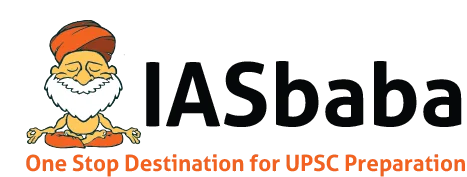Ethics Theory, TLP-UPSC Mains Answer Writing
Q. 3. “The NITI Aayog’s Multidimensional Poverty Index (MPI) offers a more holistic assessment of poverty than income-based measures.” In this context, critically evaluate India’s recent progress in poverty reduction. (150 marks, 10 marks)
Introduction
India’s official adoption of the Multidimensional Poverty Index (MPI) by NITI Aayog marks a shift from monetary poverty metrics to a broader framework encompassing education, health, and living standards, enabling a more comprehensive poverty analysis.
Body
What is MPI and How It Differs from Income-Based Measures
- Multidimensional Approach: MPI evaluates poverty across three dimensions—health, education, and standard of living—using 12 indicators such as nutrition, years of schooling, sanitation, housing, etc.
- Non-Monetary Indicators: Unlike traditional income/consumption-based measures, MPI captures deprivations in basic human capabilities.
- Household-Centric: Identifies poor households based on multiple deprivations simultaneously, offering granular insights.
- Focus on Outcomes: Reflects the quality of life rather than just income levels.
India’s Recent Progress in Poverty Reduction (as per MPI)
- Sharp Decline in MPI: NITI Aayog’s 2023 report shows 13.5 crore people exited multidimensional poverty between 2015-16 and 2019-21.
- Improvement Across States: Uttar Pradesh, Bihar, and Madhya Pradesh registered the highest decline in MPI value and headcount ratio.
- Health & Sanitation Gains: Nutrition deprivation fell from 44% to 33%; access to clean cooking fuel rose from 44% to 59%.
- Education Indicators: School attendance improved, and the years of schooling indicator saw notable progress.
- Housing and Assets: Access to electricity, improved housing, and asset ownership significantly increased due to schemes like PMAY, Saubhagya, and Ujjwala.
Critical Evaluation: Limitations of MPI Approach
- Data Lag: MPI is based on NFHS data, which may not reflect real-time conditions, especially post-COVID.
- Lack of Urban Focus: MPI underrepresents urban poverty and informal work-related vulnerabilities.
- Exclusion of Income Dimension: While MPI captures capabilities, it omits direct income/consumption information, which is still essential.
- Inequality and Depth Overlooked: MPI does not account for intensity of deprivation among the poor or intra-household disparities.
- Fragmented Data Systems: Dependence on household surveys with infrequent cycles limits policy responsiveness.
Way Forward
- Combine MPI with Income Metrics: Create a composite index integrating monetary and multidimensional aspects for balanced poverty tracking.
- More Frequent Data Collection: Establish real-time poverty monitoring systems through digital platforms.
- Urban MPI Inclusion: Develop urban-specific MPI frameworks reflecting challenges like housing, healthcare access, and informal employment.
- Use MPI for Targeted Schemes: Leverage MPI findings to prioritize districts and households under poverty alleviation programs.
- Independent Audits: Third-party evaluations and cross-verification of MPI data to enhance credibility and usability.
Conclusion
India’s progress in multidimensional poverty reduction is commendable and aligns with Article 21 and SDG-1. However, a hybrid, dynamic approach integrating MPI and income-based indicators will ensure more inclusive and responsive policymaking














